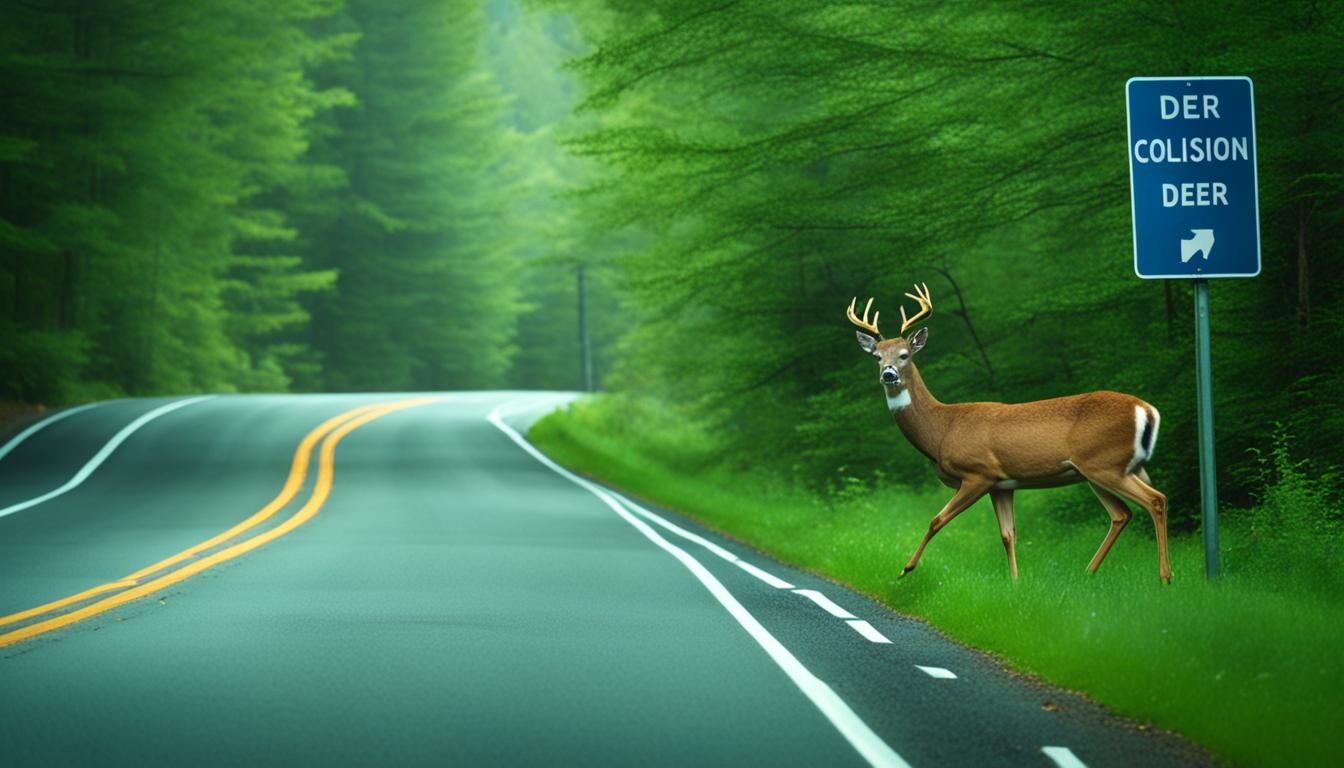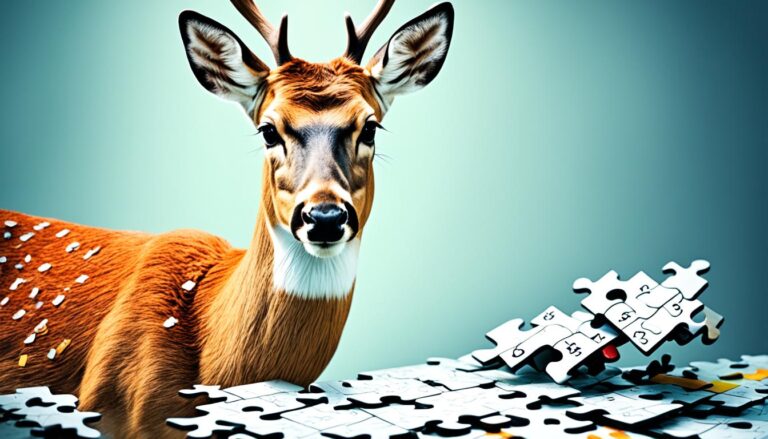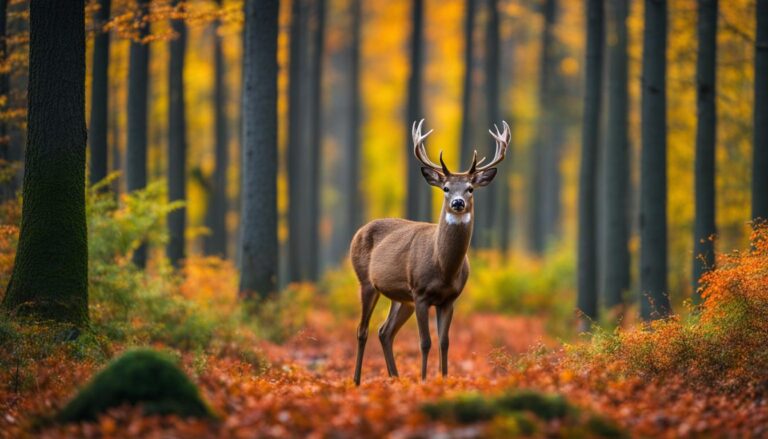Understanding Why Deers Run in Front of Cars
Deer-vehicle collisions are a significant concern, leading to numerous accidents and posing serious risks to both drivers and wildlife. It is essential to comprehend the reasons behind why deers run in front of cars to develop effective strategies for preventing these accidents and promoting road safety.
The rise in deer accidents can be attributed to multiple factors, including the increasing deer population and the disruption of their habitats due to road construction. During the fall mating season and at night, when deers are more active, the risk of accidents escalates. It is crucial to explore deer behavior and understand their attraction to roads, movement patterns, and response to headlights to mitigate these collisions effectively.
Content Highlights
ToggleKey Takeaways:
- Deer-vehicle collisions are a common occurrence, resulting in fatalities, injuries, and significant vehicle damage.
- Deer are attracted to roads due to the availability of food sources and the need for mating or better feeding grounds.
- Inexperienced deer can be spooked by traffic noise, leading them to run towards vehicles instead of away from them.
- Male deer, driven by the fall mating season, may become less aware of their surroundings, increasing the risk of collisions.
- Deer have excellent peripheral vision but are less likely to look up and be aware of oncoming vehicles.
Why Are Deer Attracted to Roads and How Do They Behave?
Deer have a strong attraction to roads due to various factors that influence their behavior and movement patterns. Understanding these reasons is crucial for implementing effective strategies to prevent deer-vehicle collisions and ensure road safety.
One of the main reasons deer are attracted to roads is the availability of food sources in nearby fields and pastures. Roads often provide easy access to grazing areas, making them a convenient foraging spot for deer. Additionally, roads serve as pathways for deer to travel in search of mates or better feeding grounds. This innate behavior to explore and find resources leads deer to cross roads and spend significant time near them.
Furthermore, some deer become accustomed to the sounds of moving vehicles and may disregard the dangers posed by roads. These habituated deer may perceive roads as a part of their environment and underestimate the risks associated with crossing them. However, when deer are not familiar with traffic noise, they can be spooked by the sound of vehicles, causing them to run in the direction of the noise instead of away from it. This startled behavior further increases the chances of collisions with vehicles.
Seasonal changes also play a role in deer movement near roads. During the fall mating season, deer activity intensifies, resulting in increased movement and crossing of roads. Male deer, in particular, become more focused on finding a mate and may pay less attention to their surroundings, including oncoming traffic. This combination of mating behavior and heightened movement patterns puts them at a higher risk of collisions with vehicles.
Understanding the complex relationship between deer attraction to roads, their behavior, and movement patterns is essential for developing effective road safety measures. By considering these factors, transportation officials, wildlife organizations, and drivers can work together to minimize the risk of deer-vehicle collisions and ensure the safety of both humans and wildlife.

| Factors Influencing Deer Attraction to Roads and Behavior | Implications |
|---|---|
| Availability of food sources near roads | Increases the likelihood of deer spending time near roads and crossing them in search of food |
| Acclimation to traffic noise | Leads habituated deer to underestimate the dangers posed by roads |
| Shock response to unfamiliar traffic noise | Causes deer to run in the direction of the noise, increasing the risk of collisions |
| Seasonal changes, such as the fall mating season | Results in increased deer movement and crossing of roads |
The Implications of Deer Behavior on Road Safety
The behavior of deer near roads has significant implications for road safety. It is important for drivers to be aware of these behaviors and take necessary precautions to minimize the risks of collisions. Maintaining a cautious driving speed, especially during peak deer activity hours, can provide drivers with more time to react to deer movements. Using high beams when allowed can help increase visibility and alert deer to the presence of vehicles. Additionally, honking the horn may startle deer and encourage them to move away from the road.
Implementing early warning systems, such as thermal driving cameras, can also provide drivers with advanced notice of deer or other wildlife on the roadway. This technology enables drivers to anticipate potential dangers and take appropriate action to avoid collisions.
The Role of Deer Vision and Driver Awareness in Collisions
Deer have remarkable peripheral vision, allowing them to detect movement and potential threats from various angles. However, their vision is primarily focused on the horizontal plane, making it less likely for them to look up and be aware of oncoming vehicles. This limited vertical vision can significantly contribute to deer-vehicle collisions.
Furthermore, deer possess superior night vision, which aids their survival in low light conditions. However, when exposed to bright headlights, deer can become temporarily blinded, leading to confusion and potential collisions with vehicles. The dazzling effect of the headlights prevents them from accurately gauging the speed and distance of approaching cars, increasing the risk of accidents.
To reduce the occurrence of deer-vehicle collisions, it is essential for drivers to be aware of these factors and take necessary precautions. Using high beams when driving in areas prone to deer crossings can help illuminate the surroundings, and honking the horn can scare deer away, providing a warning signal to these animals. Additionally, maintaining a cautious driving speed during peak deer hours, such as dawn and dusk, can allow drivers adequate time to react if a deer appears on the road.
Implementing early warning systems, such as thermal driving cameras that detect heat signatures, can also play a crucial role in preventing deer-vehicle collisions. These systems provide drivers with advanced notice of deer or other wildlife in the roadway, allowing them to react promptly and avoid potential accidents.
- Wyoming Deer Season 2025-2026 New Schedule & Rules - 15 September 2025
- Wisconsin Deer Season 2025-2026: WI Deer Hunting Guide [Schedule, Rules, Licenses] - 15 September 2025
- West Virginia Deer Season 2025-2026 Complete Date & Guide - 15 September 2025






